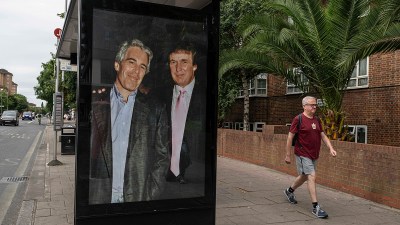A new Cold War, this time it’s versus terrorists
In the days immediately after the attacks of September 11, 2001, members of President Bush’s war cabinet declared that...

In the days immediately after the attacks of September 11, 2001, members of President Bush’s war cabinet declared that it would be impossible to deter the most fervent extremists from carrying out even more deadly terrorist missions with biological, chemical or nuclear weapons.
Since then, however, administration, military and intelligence officials assigned to counterterrorism have begun to change their view. After piecing together a more nuanced portrait of terrorist organisations, they say there is reason to believe that a combination of efforts could in fact establish something akin to the posture of deterrence, the strategy that helped protect the United States from a Soviet nuclear attack during the cold war.
Interviews with more than two dozen senior officials involved in the effort provided the outlines of previously unreported missions to mute Al-Qaeda’s message, turn the jihadi movement’s own weaknesses against it and illuminate Al-Qaeda’s errors whenever possible.
A primary focus has become cyberspace, which is the global safe haven of terrorist networks. To counter efforts by terrorists to plot attacks, raise money and recruit new members on the Internet, the government has mounted a secret campaign to plant bogus e-mail messages and website postings, with the intent to sow confusion, dissent and distrust among militant organisations, officials confirm.
At the same time, American diplomats are quietly working behind the scenes with Middle Eastern partners to amplify the speeches and writings of prominent Islamic clerics who are renouncing terrorist violence. At the local level, the authorities are experimenting with new ways to keep potential terrorists off guard.
“What we’ve developed since 9/11, in six or seven years, is a better understanding of the support that is necessary for terrorists, the network which provides that support, whether it’s financial or material or expertise,” said Michael E. Leiter, director of the National Counterterrorism Center.
The emerging belief that terrorists may be subject to a new form of deterrence is reflected in two of the nation’s central strategy documents. The 2002 National Security Strategy, signed by the president one year after the Sept. 11 attacks, stated flatly that “traditional concepts of deterrence will not work against a terrorist enemy whose avowed tactics are wanton destruction and the targeting of innocents.”
Four years later, however, the National Strategy for Combating Terrorism concluded: “A new deterrence calculus combines the need to deter terrorists and supporters from contemplating a WMD attack and, failing that, to dissuade them from actually conducting an attack.”
American officials have spent the last several years trying to identify other types of “territory” that extremists hold dear, and they say they believe that one important aspect may be the terrorists’ reputation and credibility with Muslims. Under this theory, if the seeds of doubt can be planted in the mind of Al-Qaeda’s strategic leadership that an attack would be viewed as a shameful murder of innocents—or even more effectively, that it would be an embarrassing failure—then the order may not be given, according to this new analysis.
Senior officials point to some older and now publicised examples that suggest that their efforts are moving in the right direction. George J Tenet, the former director of the CIA, wrote in his autobiography that the authorities were concerned that Qaeda operatives had made plans in 2003 to attack the New York City subway using cyanide devices. Zawahri reportedly called off the plot because he feared that it “was not sufficiently inspiring to serve Al-Qaeda’s ambitions,” and would be viewed as a pale, even humiliating, follow-up to the 9/11 attacks.



- 01
- 02
- 03
- 04
- 05




























